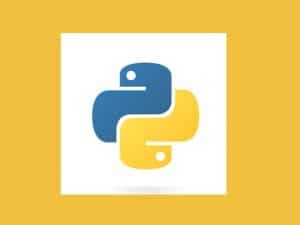Financial Accounting: A Comprehensive Guide with E-book

- Description
- Curriculum
- FAQ
- Reviews
Get ready for a deep dive into Financial Accounting, a critical skill for any aspiring accountant, business owner, or student. This comprehensive course offers you lifetime access to many sections of engaging video content, a multitude of real-world examples, practice problems, and an extensive, downloadable e-book in EPUB, MOBI, and PDF formats.
From the fundamentals of the double-entry accounting system to the complexities of long-term liabilities and cash flow statements, this course covers a breadth of topics equivalent to an undergraduate Financial Accounting program. The course supplements academic study by providing an online resource you can refer back to, ensuring the concepts stay fresh and readily accessible.
We begin with an introduction to Financial Accounting and progress steadily through various topics, including recording transactions, adjusting and closing entries, merchandising transactions, and various cost flow assumptions. Specialized sections delve into subsidiary ledgers, bank reconciliations, depreciation methods, payroll accounting, and more.
The course incorporates Excel for practical application of the theories taught. If you’re unfamiliar with Excel, fear not! We provide pre-formatted worksheets and step-by-step instructional videos that move at a friendly pace.
We debunk the myths surrounding debits and credits, illustrate how to record transactions using these methods, and demonstrate the importance of period-end adjusting entries.
This course is more than just a procedural guide—it stresses the understanding of underlying theories to make learners flexible and adaptable in a constantly changing environment. You’ll learn the rationale behind financial accounting processes, ensuring you can apply these skills in a variety of contexts.
Incorporating real-world scenarios, each section breaks down complex concepts into understandable chunks, followed by practical application in Excel.
Topics include, but are not limited to:
· Debits and Credits
· Period End Adjusting Entries
· Recording Closing Entries
· Inventory Transactions
· Subsidiary Ledgers & Special Journals
· Bank Reconciliations
· Accounts Receivable
· Depreciation Methods
· Payroll Accounting
· Partnership Accounting
· Corporate Accounting
· Bonds Payable, Notes Payable, & Long-Term Liabilities
· Cash Flow Statements
The course is designed to start at the basics and gradually advance to the level of detail expected in an undergraduate program. By course completion, you will have a firm grasp on Financial Accounting that not only stands the test of time but also serves as a continuously available resource in your accounting journey. Enroll now to become a confident, adaptable accounting professional.
-
72 Accounting Objectives, Accounting Equation, & EthicsVideo lesson
-
8102 Accounting Objectives UVideo lesson
-
9Notes - Categories of Accounting – Financial Accounting & Managerial AccountingText lesson
-
10115 Accounting EquationVideo lesson
-
11Notes - Accounting ObjectivesText lesson
-
12150 Ethic & ProfessionVideo lesson
-
13Notes - Ethics in AccountingText lesson
-
245 Financial Transaction Rules & Thought ProcessVideo lesson
-
25155 Financial Transaction RulesVideo lesson
-
26Notes - Accounting Equation and Account TypesText lesson
-
27160 Financial Transaction Thought ProcessVideo lesson
-
28Notes - Transaction Rules & Thought Process Using the Accounting EquationText lesson
-
296 Recording Transactions Using Accounting EquationVideo lesson
-
30165 Cash Transaction - Accounting EquationVideo lesson
-
31Notes - Transactions & The Accounting EquationText lesson
-
32170 Accounts Receivable Transactions Accounting EquationVideo lesson
-
33170 Accounts Payable Transactions Accounting EquationVideo lesson
-
357 Debits & Credits DefinedVideo lesson
-
36205 Debits & CreditsVideo lesson
-
37Notes - What are Debits and CreditsText lesson
-
38210 Rules for Using Debits & CreditsVideo lesson
-
39Notes - Account Types Normal BalancesText lesson
-
40Note - Define Account Types and List Accounts by Account TypeText lesson
-
419 Debit & Credit Rules & Thought ProcessVideo lesson
-
42215 Journal Entry Thought ProcessVideo lesson
-
43Note - One Rule for Increasing and Decreasing an Account BalancesText lesson
-
44220 Trial BalanceVideo lesson
-
45Notes - The Rule Applied to Cash and Asset AccountsText lesson
-
46Notes - The Rule Applied to Accounts Payable and Liability AccountsText lesson
-
47Notes - The Rule Applied to Equity AccountsText lesson
-
4810 Record Cash Transactions Using Debits & CreditsVideo lesson
-
49225 Cash Journal Entries with CashVideo lesson
-
50Notes - Transaction Rules Using Debits and CreditsText lesson
-
51Notes - Transaction Though ProcessText lesson
-
52Worksheet - Prob 4 Debits and Credits CashVideo lesson
-
53Notes - Recording Transaction where Cash is AffectedText lesson
-
6113 Record Transactions to General LedgerVideo lesson
-
62245 General LedgerVideo lesson
-
63Notes - General Ledger & Trial BalanceText lesson
-
64Worksheet - General Ledger CashVideo lesson
-
65Worksheet - Prob 8 General Ledger Accounts ReceivableVideo lesson
-
66Worksheet - Prob 8 General Ledger Accounts PayableVideo lesson
-
67Short Calculation Questions - Debits and CreditsVideo lesson
-
68Multiple Choice Questions - Debits and CreditsVideo lesson
-
732 Accounting Cycle, Types of Adjusting Entries, Cash vs Accrual OverviewVideo lesson
-
741 Accounting Cycle Steps in the Accounting ProcessVideo lesson
-
752 Types of Adjusting Journal Entries Adjusting Journal EntryVideo lesson
-
76Notes - What Adjusting Journal Entries Are?Text lesson
-
77Notes - Why Adjusting Entries Are NeededText lesson








